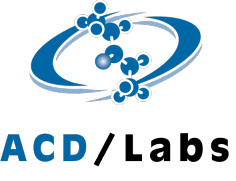Advanced Chemistry Development
 | |
| Private | |
| Industry | Life Sciences, Chemistry Software |
| Founded | 1994 |
| Headquarters | Toronto, ON, Canada, Toronto, Ontario, Canada |
Area served | Global |
| Products | Integrated Chemical and Analytical Knowledge Management, Analytical Data Hanlding, Molecular Property Prediction & modelling, Computer Assisted Structure Elucidation, Chemical structure drawing, Chemical Nomenclature. |
| Website | www.acdlabs.com |
Advanced Chemistry Development, Inc., (ACD/Labs) is a software company that provides solutions in support of small molecule chemistry R&D. The company is headquartered in Toronto, Ontario, Canada with direct sales offices in the UK, Germany, France, China, and India. Their distribution channel extends throughout Europe to Australia, S. America, and Africa. ACD/Labs provides enterprise solutions for analytical data handling and knowledge management; molecular property modelling and property-based design to a variety of industries including pharma/biotech, fine chemicals, consumer goods, agrochemicals, petrochemicals, food and beverage, academic institutions, and government organizations.
History
ACD/Labs was founded in 1994 and remains a private company. In 2009 the company merged with Pharma Algorithms to expand its molecular property prediction and modelling capabilities.
Products
ACD/Spectrus Platform - a chemically intelligent software platform that provides a uniform environment for multi-vendor, multi-technique analytical data processing, analysis, interpretation and knowledge management. Applications support NMR, hyphenated MS, Chromatography, Raman, IR, thermal analysis (TGA, DSC), and other major analytical techniques. Solutions can be configured to provide full automation options and integration with existing systems (ELN, LIMS, archive, registries, ERPs) is possible.
ACD/Percepta Platform - provides prediction and modelling of physicochemical (pKa, logD, Solubility), ADME (Blood-Brain Barrier[1] CYP 450 Regioselectivity[2])and toxicity (Genotoxicity, hERG Inhibition[3]) endpoints; and the capability to design or modify structures to attain a desired property profile. Proprietary computational algorithms predicts physiochemical.
- Mass Spectrometry Software - the basic application (ACD/Spectrus Processor) includes LC/MS processing and fragment/spectrum assignment. Modules to predict fragmentation pathways, targeted and non-targeted deconvolution, and identification of compounds by spectral comparison are available.
- NMR Software - offers simultaneous processing of 1D and 2D NMR data. Structures can be embedded in the spectrum and fully assigned to chemical shifts. Multiplet analysis is done in the background during processing.
NMR spectrum prediction is available for 1H, 13C, 19F, 15N, 31P, and H,H; H,C as well as H,N correlations.
- Chromatographic Method Development and Optimization - a variety of applications offer: method development with full instrument control for Waters Empower and Agilent ChemStation; modelling and optimization of LC and GC methods; prediction of chromatograms and retention time; and databasing of separations.
- Optical - processing, interpretation and databasing of Raman, IR and other optical techniques. A clustering tool is also available.
- ACD/Structure Elucidator - Computer Assisted Structure Elucidation (CASE) software that uses NMR and MS data to suggest all possible chemical structures that fit given data and takes into account structure suggestions.[4]
ACD/Name - Nomenclature package capable of producing systematic, multi-lingual IUPAC names, as well as names based on other popular conventions (CAS, SMILES, InChI), based on chemical structure.
ACD/ChemSketch - chemical drawing tool (freeware available to academic institutions)
See also
- International Union of Pure and Applied Chemistry
- Computer-Assisted Drug Design
- QSAR
- Structural Elucidation
- Scientific Data Management System
- Analytical Chemistry
- Instrumental chemistry
References
- ↑ Kiril Lanevskij et al.: “Ionization-specific prediction of blood–brain permeability” Journal of Pharmaceutical Sciences, Volume 98, Issue 1, pages 122–134, January 2009 http://onlinelibrary.wiley.com/doi/10.1002/jps.21405/abstract
- ↑ Pranas Japertas et al.: ”Trainable In-Silico Screening Filter for Various Human Cytochrome P450 Isoforms Inhibition Liability” http://www.acdlabs.com/download/publ/2010/qsar10_cyp.pdf
- ↑ Andrius Sazonovas et al.:“GALAS Modeling Methodology Applications in the Prediction of Drug Safety Related Properties” http://www.acdlabs.com/download/publ/2009/issx09_galas.pdf
- ↑ Review article. Progress in NMR Spectroscopy (2007)
- Comparison of pKa prediction accuracy among 9 in silico predictors.